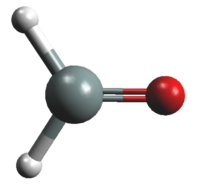|
The experimental lines are from
(1) S. Bailleux, M. Bogey, C. Demuynck, J.-L. Destombes,
and A. Walters,
1994, J. Chem. Phys. 101, 2729.
The reported uncertainties of "better than 50 kHz"
appear to be too conservative by far. We have used
20 kHz, which appears to be slightly conservative
still. Watson's S-reduction was used here. Since
DK was only slightly determined
and rather small compared to an ab initio
value, an estiamted value was kept fixed in the fit.
Some closely spaced asymmetry doublets
show essentially symmetric, fairly large deviations.
These lines have been omitted from the fit here.
The deviations may be caused by the Stark effect.
Unresolved doublets were retained, but those with
calculated splitting of more than 1 MHz
were not merged.
Predictions with uncertainties larger than
0.3 MHz should be viewed with caution.
The data set is deemed to be sufficient for
observational purposes.
The dipole moment is from an ab initio
calculation by
(2) B. Ma and H. F. Schaefer III,
1994, J. Chem. Phys. 101, 2734.
At low temperatures, it may be necessary to discern between
ortho-H2SiO and para-H2SiO.
The ortho and para states are described by
Ka being odd and even, respectively.
The nuclear spin-weights are 3 and 1 for
ortho-H2SiO and para-H2SiO,
respectively. The
JKaKc =
111 is the lowest ortho state.
It is 6.1173 cm–1 above ground.
Separate
para and
ortho predictions are available up to
J = 10 and Ka = 3
along with separate
para and
ortho partition function values. Note:
the spin-weight of 3 for the separate ortho predictions
has been eliminated.
|
